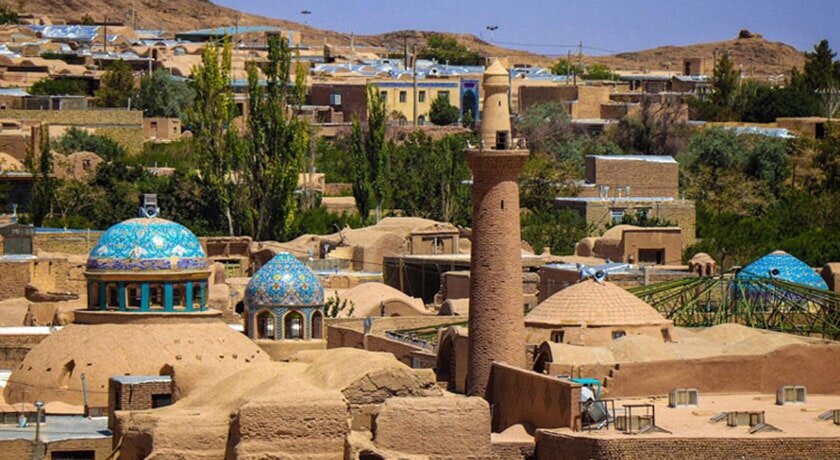Cultural heritage minister visits Nodoushan historical texture in central Iran

TEHRAN—Minister of Cultural Heritage Seyyed Reza Salehi-Amiri visited the 50-hectare historical texture of Nodoushan district in Meybod county, Yazd province, on Saturday.
He also paid a visit to the White Castle in Nodoushan, which pertains to the Afsharid and Zand eras in central Iran, ISNA reported.
During this visit, it was suggested that a team representing the Council for the Registration of Works of the Ministry of Cultural Heritage be deployed in this historical city to review the national registration files in the province.
The structure of the city of Nodoushan dates back to the Ilkhanid era and is in the form of a castle enclosed in a brick tower and rampart. According to the existing evidence such as the pulpit of the Nodoushan Jame’ Mosque, it flourished in the fifth and sixth centuries AH.
Based on the historical texts, the current structure of Nodoushan dates back to the time of the presence of Al-e Mozaffar family in Meybod, and the aforementioned changes to the structure were also made by this family.
The minister also visited Nodoushan Jame’ Mosque which pertains to the eighth century AH. The mosque has a 20-meter-high minaret that was added during the Safavid period.
This 60-step minaret with a brick facade and a glazed brick spire with a shaking minaret similar to the shaking minaret of Isfahan is a masterpiece.
Salehi Amiri also visited the historic house of Dr. Mohammad-Ali Eslami Nodoushan, who was an Iranian literary critic, translator and poet, and one of the most celebrated contemporary writers on culture and literature in Iran.
Nodoushan’s academic journey began in Yazd, where he graduated from high school before earning his BA in law from the University of Tehran. He then moved to Paris to pursue his MA and Ph.D. Upon returning to Iran, he began teaching literature and law at the University of Tehran, quickly becoming one of its prominent professors and one of Iran’s renowned writers.
His fame extends beyond Iran, reaching thinkers, writers, and scholars around the world. Nodoushan’s magnificent works have significantly contributed to promoting the Persian language and literature.
Nodoushan’s tireless efforts to familiarize people worldwide with Iranian literature and his deep sense of patriotism are truly commendable and will continue to inspire future generations.
He spent his life studying the scientific and literary works of Iranian writers and translating books by the world’s great writers, all of which have been published in over 50 books.
“Iran’s Conscience: Ferdowsi, Rumi, Sadi, Hafez” is one of his wonderful books. This book covers a series of lectures he gave at the Book City Institute in Tehran in the late 1990s.
His studies on Persian poet Hafez are among the most useful sources of information for Persian literature scholars. Among them are “Endless Story of Hafez” and “Contemplation on Hafez”.
Some of his massive studies on the Shahnameh (The Book of Kings), the epic masterpiece of the Persian poet Abolqasem Ferdowsi, are contained in the books “The Story of Stories: Rustam and Esfandiar in the Shahnameh” and “Heroes’ Death and Life in the Shahnameh”.
A street in Tehran’s District 6 was named after Mohammad-Ali Eslami Nodoushan in November 2020, and a bust of the Iranian scholar was set up at the intersection of that street with Vesal Shirazi St.
A boulevard in the central city of Yazd was also named after him at the same time. The City Council in his hometown Nodoushan had previously named a square after him.
Nodoushan has a population of 4,500 and is located in northwestern Yazd province.
KD
Leave a Comment